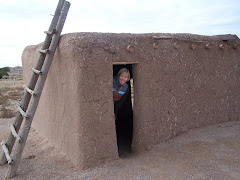Reidel, Chris (2009). THEJournal. Retrieved February 18, 2009, from www.thejournal.com Web site: http://www.thejournal.com/articles/23872_1
In his article “Create, Collaborate, Communicate: Empowering Students With 21st Century Skills, Chris Reidel relates some of the insight he gained, at a recent conference where he heard Howie DiBlasi speak about technology and Education in America. DiBlasi says that American educators must begin to incorporate technology into their classrooms in order to give students the analytical and problem solving skills they will require to be successful in the changing American workplace. He says that teachers must begin to create student-centered classrooms, looking to the future needs of students to determine what technologies and tools to use in the classroom.
DiBlasi refers to a recent survey, and says that the top three things employers are looking for in new employees are creative problem solving, critical and analytical thinking skills and evaluation and gathering of information. DiBlasi has created a list of the top-16 things educators can do help students prepare for life and employment in modern-day society. The list includes promoting computer literacy among staff, improving collaborative and critical thinking and problem solving skills, promoting project-based learning and 1:1 computing in schools.
Question #1:
One of the major questions this article raised for me is: what is RSS, and can I use it in my future classroom? While this may sound silly, I know that if I’m a 27-year-old student wondering what RSS is, then there are probably many other people wondering, too.
Turns out, I was right: I found lots of information online, explaining RSS. I found a great video on youtube, called “RSS in plain English,” by Common Craft. It was great! It explained RSS in a way that was not intimidating. Also, I learned that I already use RSS through my Google account and blogs. From what I understand, RSS is a live feed that updates a “reader” page, so that you don’t have to go out looking for new information—it comes to you. RSS could be useful in my future classroom because it will save me time, and make it easy for me to access information. I can subscribe to multiple sites/blogs, and have the reader update me when something new comes in. This way, I can incorporate current ideas into my lesson plans, and keep my teaching interesting and up-to-date.
Question #2:
How can I use technology in my classroom to improve critical and analytical thinking, and sharpen student’s problem solving skills?
I believe that today’s students are expecting teachers to use technology in the classroom, and educators must strive to incorporate technology in every day teaching, if they want to get students’ attention, and get them interested in learning.
I can use web-based resources to make almost any project collaborative. With collaborative projects, students can create projects not only for their teachers to review, but for their peers to look over as well. By giving students the opportunity to review each other’s work, teachers give students a sense of importance in the classroom community, and get students thinking about the classroom as a group of students working together, rather than thinking individualistically.
I can use social bookmarking to give students an easy way to access and share information.
I can create a class blog to help students and parents keep up with what is happening in class. This will also give everyone a place to leave messages, and/or ask questions.
I can use these technological tools, and others to encourage students to become more self-directed. I can use technology to get students to accept responsibility for and get excited about the “finished product” of a project, and to create more of a “team” mentality among students in my classroom. I’m sure by the end of 422, I’ll have even more ideas about how to effectively use technology in my future classroom!



No comments:
Post a Comment